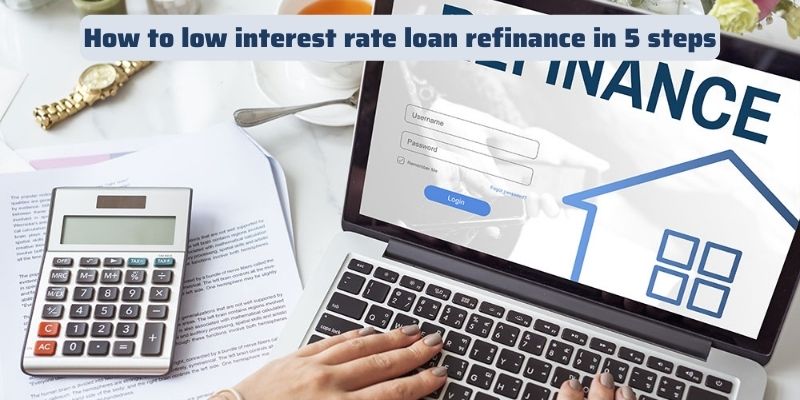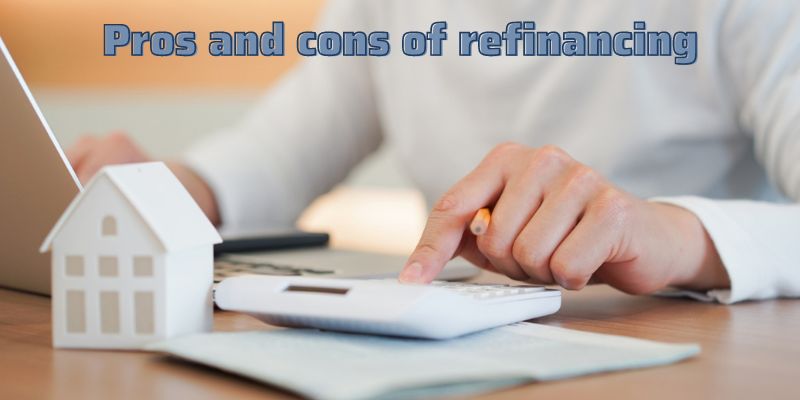How to low interest rate loan refinance in 5 steps

How to low interest rate loan refinance in 5 steps
Refinancing can save you a lot of money on interest fees if you can secure a sufficiently lower rate, but it does take some effort:
1. Check your credit score
You can get a better rate and refinance at a lower cost by improving your credit score. Work on improving your credit first, then try to refinance again after you’ve done so if you’re not satisfied with your credit score or the rates you’re being offered. For a refinance, mortgage lenders typically require a credit score of 620 or more, however there are refinancing options available to people with bad credit, such as streamline programs. Reduce your credit utilization ratio (the amount of credit you’re using compared to your credit limit) and pay off your highest-interest or highest-payment debts to raise your credit score.
2. Calculate the cost vs. savings of refinancing
Identifying your break-even point and refinancing is one of the most crucial steps. Similar to an initial mortgage, a refinance typically has closing charges that must be paid up front and can get expensive. The cost savings from a lower rate could not offset those associated with moving if you don’t intend to stay in your current house for more than a few years. You can determine this timeline using the refinance breakeven calculator provided by Bankrate.
3. Find the best refinance rates today
It’s just as important to shop around when you refinance as it was when you applied for your first mortgage. Explore refinance offers from at least three mortgage lenders (your bank or current lender might be good places to start), and keep an eye on rates while you comparison-shop — this can help you decide when to lock in a rate. Check out Bankrate’s lender reviews, as well, to help guide your decision.
4. Get your paperwork in order
Once you’ve chosen a lender, find out what documentation is required to submit a refinance application. Your lender will go at tax returns, pay stubs, W-2s, and other proofs of income, as well as evidence about any assets like savings, as part of the requirements.
5. Get ready for the mortgage refinance closing
Although refinancing isn’t quite as difficult as house hunting, it still takes time. Don’t create additional credit accounts or make any significant purchases while your new loan is being processed. This could cause your application to fail.
Follow this guide to refinance your mortgage.
How to obtain the most favorable mortgage refinancing rate

How to low interest rate loan refinance in 5 steps
It’s important for every mortgage applicant to compare prices. When you shop, take into account all of the loan’s terms, not simply the interest rate. Make sure to compare APRs, which account for a variety of other mortgage costs not taken into account by the interest rate. You might receive a special offer from your present bank or credit union, or some lenders provide lower closing expenses and fees than others. If you find a better bargain elsewhere, don’t be scared to leave your present lender. Work with a mortgage broker if you want assistance comparing offers from several lenders.
How to get the best refinance rate is provided here.
Pros and cons of refinancing

How to low interest rate loan refinance in 5 steps
Low interest rate loan refinance can be a wise choice, whether it allows you to lock in a reduced rate or use a cash-out arrangement to access your home equity to pay for a project like a home renovation.
Pros of mortgage low interest rate loan refinance
- You can lock in a lower rate by refinancing, which can reduce your monthly payments and put some money back in your budget.
- If your home’s value has increased, you might be able to stop paying private mortgage insurance (PMI), which will also lower your monthly expenses. Once you buy at least 20% of your home outright, PMI should terminate automatically. However, this is typically a good time to think about refinancing, too.
- If you need money for renovations, a cash-out refi offers relatively cheap capital. It can make your monthly payments more expensive, but home improvements tend to boost your equity value even more.
Cons of mortgage low interest rate loan refinance
- Low interest rate loan refinance costs money. Closing costs can total 2 percent to 5 percent of the amount of the mortgage, which is why it’s so important to make sure you’ll recoup those costs before you move.
- Your payback duration will be prolonged if you refinance from one 30-year loan to another 30-year loan. A new loan restarts the repayment clock.
Should you refinance your mortgage?
If refinancing will enable you to save money, create equity, or accelerate the repayment of your mortgage, you should do so. You may execute a rate-and-term refinance, for instance, to get a cheaper rate if interest rates have decreased since you closed your mortgage. In addition to a cheaper rate, you could save money by getting rid of PMI or by using a cash-out refinance to access the equity in your house. However, it’s crucial to take your future goals into account when rates are low. For instance, it would not be wise to start over with a fresh loan if you want to sell your property soon.